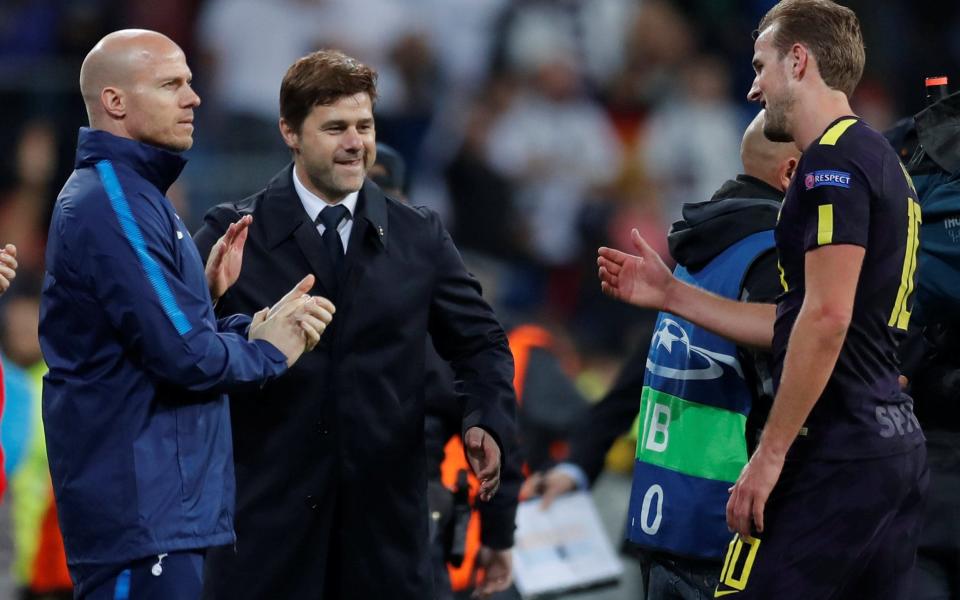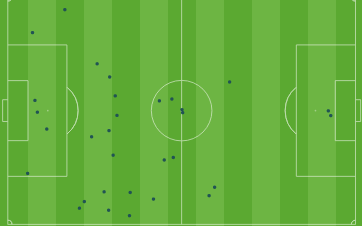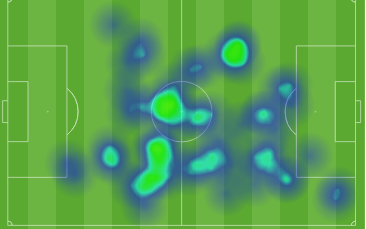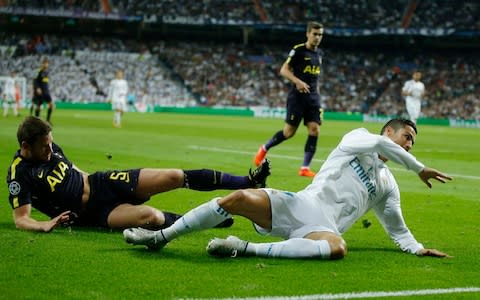Mauricio Pochettino masterclass: How Tottenham manager set side up perfectly for Real Madrid draw

Tottenham have been accused of lacking squad depth, but on Tuesday night they went to the home of the European champions without a host of first-team players and picked up a deserved point against Real Madrid.
So how did Mauricio Pochettino set up his side so astutely and make light of the absence of Dele Alli, Victor Wanyama, Ben Davies, Danny Rose (fit enough only to be a substitute) and Mousa Dembele?
Two up top
It's a sign of a confident manager when he is willing to take big gambles for the most important matches. Sir Alex Ferguson used to do it for European knockout matches, Pep Guardiola first experimented with Lionel Messi as a 'false nine' for a decisive Clasico at the Bernabeu in 2009, Pochettino himself switched to a 3-4-3 for last November's north London derby.
On Tuesday night, Pochettino again rolled the dice. Where most managers would have set up more defensively at the home of the reigning European champions, Spurs lined up in a 3-5-2 formation with two up front for the first time this season.
Fernando Llorente's only other start since joining Tottenham in the summer had been in the League Cup against Barnsley, yet here he was partnering Harry Kane at the Bernabeu.
It's unlikely that Pochettino was influenced by Llorente's record of having scored more goals against Real than any other opponents, but in any case the striker instantly looked at home in such a rarefied atmosphere.

His touch was assured and vitally he gave Tottenham an out ball when they needed to go a little bit more direct. Against a team as relentlessly attacking and athletic as Real, it was critical that Spurs had a striker who could protect the ball and bring others into play to give the team's defenders some respite.
Kane has the ability to play that role as well, but by giving him a strike partner meant he could play further up and stretch Raphael Varane rather than having to worry too much about playing with his back to goal.
Llorente put in plenty of selfless graft, but he also showed moments of real quality as well. He could have won a penalty in the first half when tripped in the box by Casemiro, and in the final 20 minutes set up excellent chances for Kane and then Christian Eriksen.
Playing with two strikers risked Spurs being overrun in midfield, but thanks to the sterling work of the likes of Harry Winks they were able to contain Luka Modric, Toni Kroos, Casemiro and Isco, while at the same time carrying a threat on the counter-attack.

Winks comes of age
With Eric Dier dropping back into defence, Harry Winks was tasked with containing Real's star-studded midfield.
Crucially, the presence of the three defenders behind him gave Winks the confidence not to sit too deep and invite pressure from the likes of Modric and Kroos.
Instead he was able to push further on and get tighter to Real's deep-lying midfielders who are so critical to the way they quickly build attacks through the middle of the pitch.
When Tottenham had the ball, Winks was happy to come deep to get it off the centre-backs and start attacks, thus allowing Moussa Sissoko to use his pace to get forward, and giving Christian Eriksen the license to roam and try and find pockets of space. Winks also pushed forward himself on plenty of occasions, and won the ball back before passing to Sissoko in the build-up to Varane's own goal.
It was a huge gamble by Pochettino to give the 21-year-old Winks such responsibility, especially in a system that had initially made him look so isolated. As it was, the solidity of a back five - helped by having the defensively minded Jan Vertonghen on the left - meant Spurs could soak up Real's pressure and quickly find Winks in space when they won back possession.

A flatter back five
A key tenet of Spurs's success over the last year has been the width and attacking thrust provided by the team's two wing-backs.
On Tuesday though, Tottenham 's wing-backs were far more disciplined, with Vertonghen playing more as a conventional left-back, and making eight tackles in the process - the most of any player in the Champions League on Tuesday. Aurier on the other side was more attacking, but even he was willing to sit in and focus primarily on defending. It was a more defensive Tottenham than we have become used to, but it was precisely what was needed on the night.
The massed back five created a big problem for Real, with Isco struggling to locate space between the lines and Benzema finding himself isolated before being replaced by Marco Asensio.

When the Tottenham defenders did get the ball they were then able to quickly stretch Real by finding Sissoko and Eriksen, or one of the two strikers.
It was a tactic out of the Sir Alex playbook. Often in high-profile matches, Ferguson would set Manchester United up with a flat defence and central midfield, which would give his front three the license to more or less stay high and not worry too much about their defensive duties.
Against Real, Eriksen and the two Spurs strikers had similar freedom, which prevented Real from piling forward with no fear of a Tottenham threat in behind.
The match was a big test of Tottenham and Pochettino's big-match temperament, and it was one they passed with flying colours.

